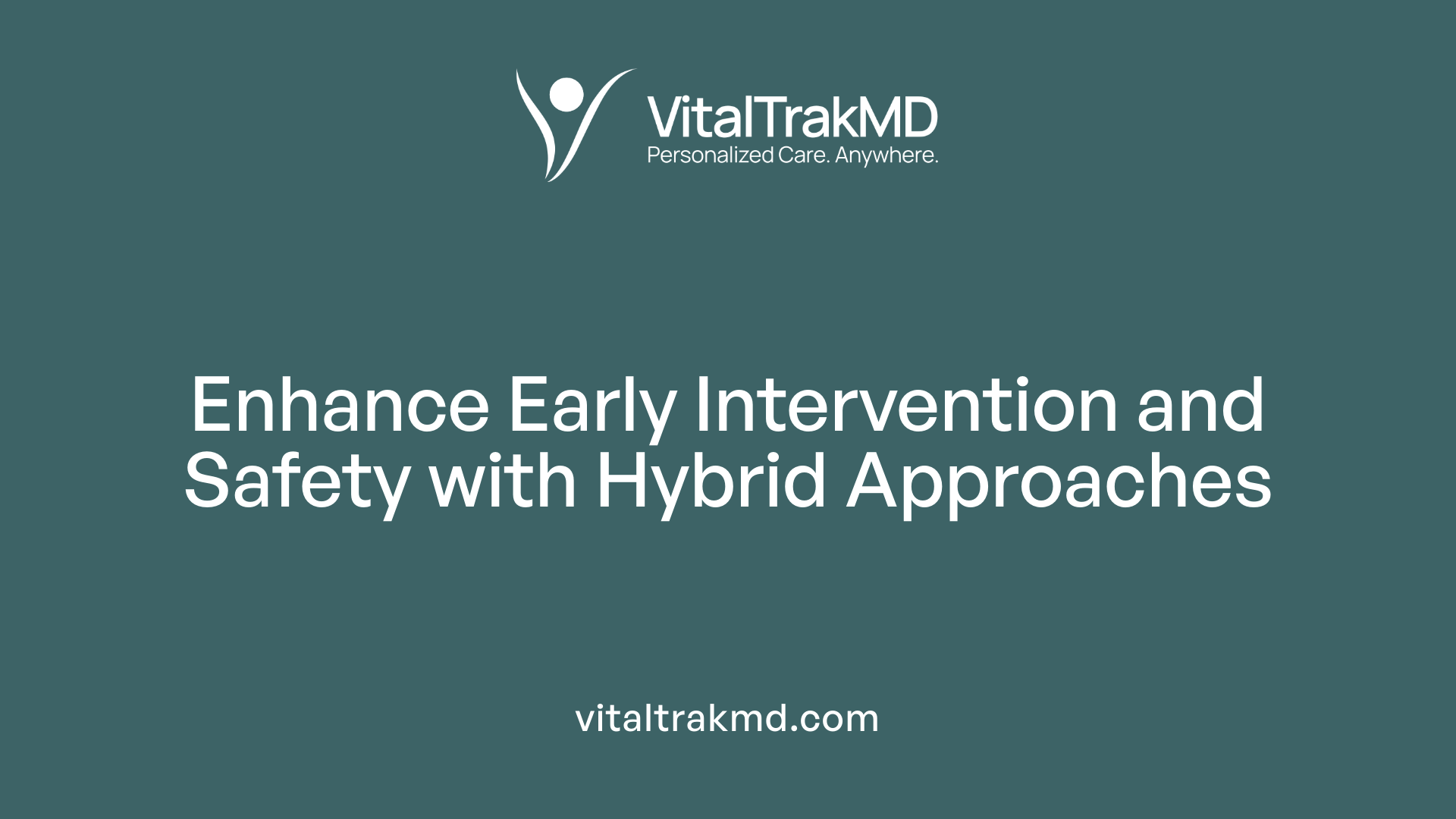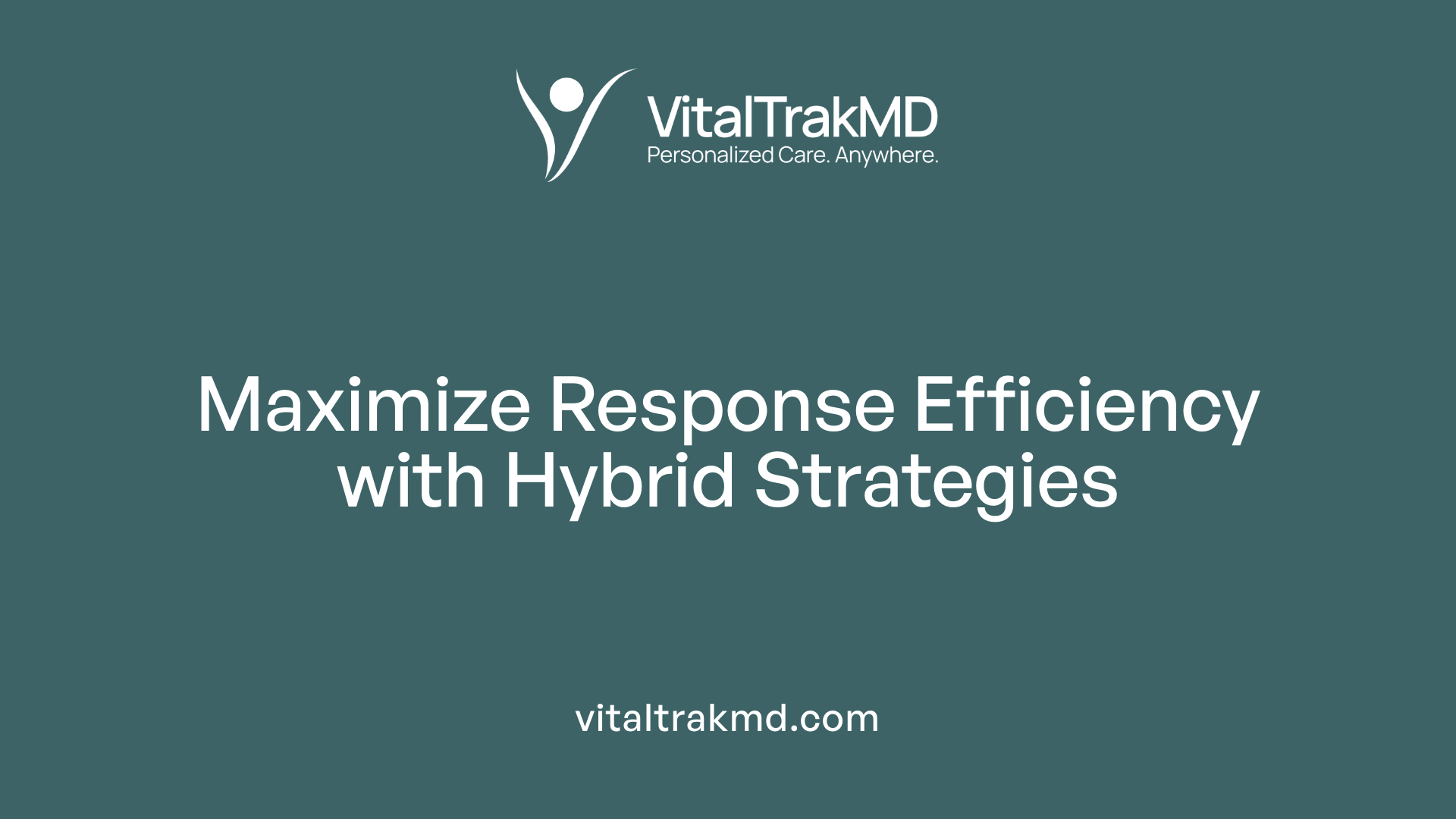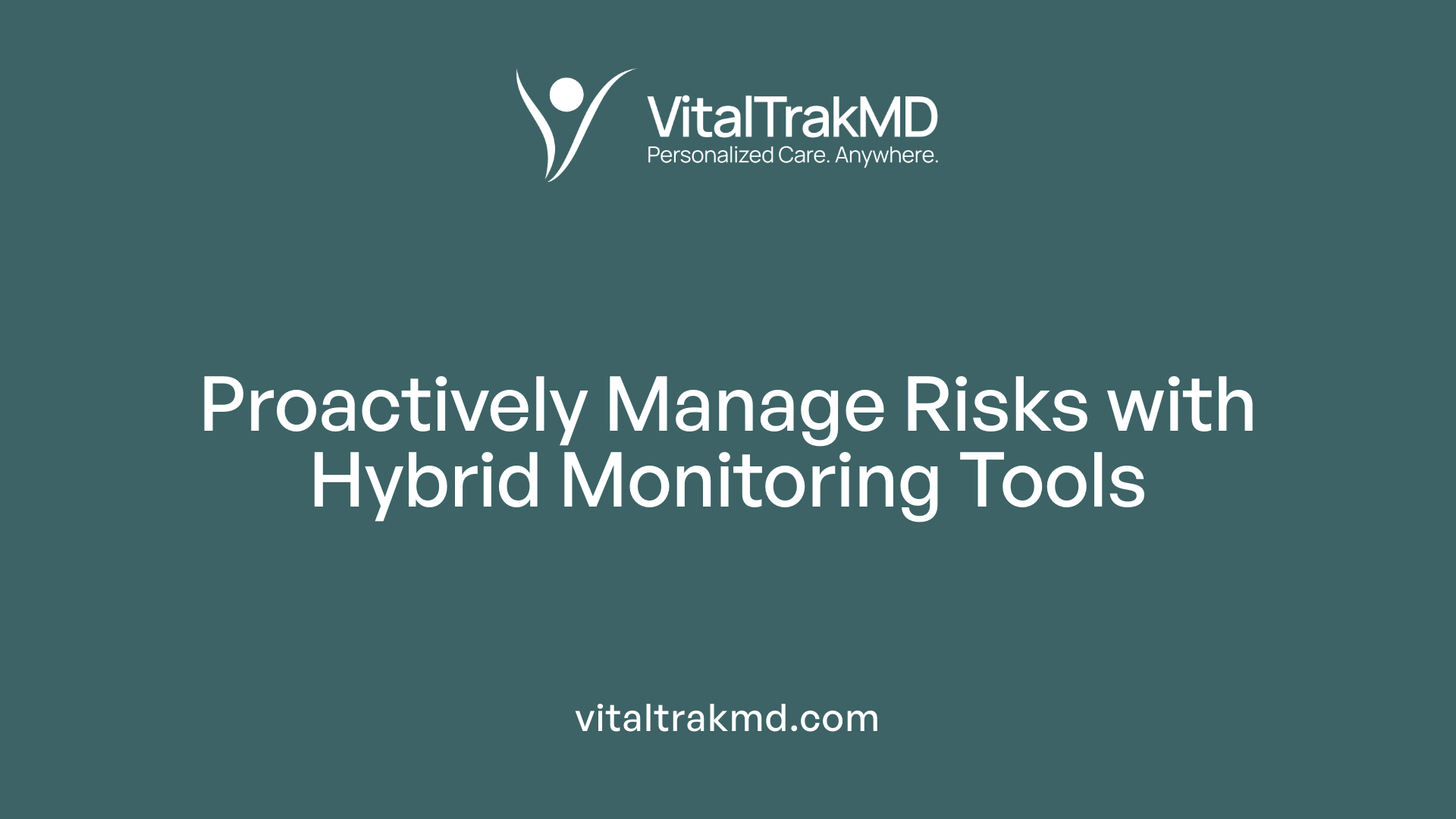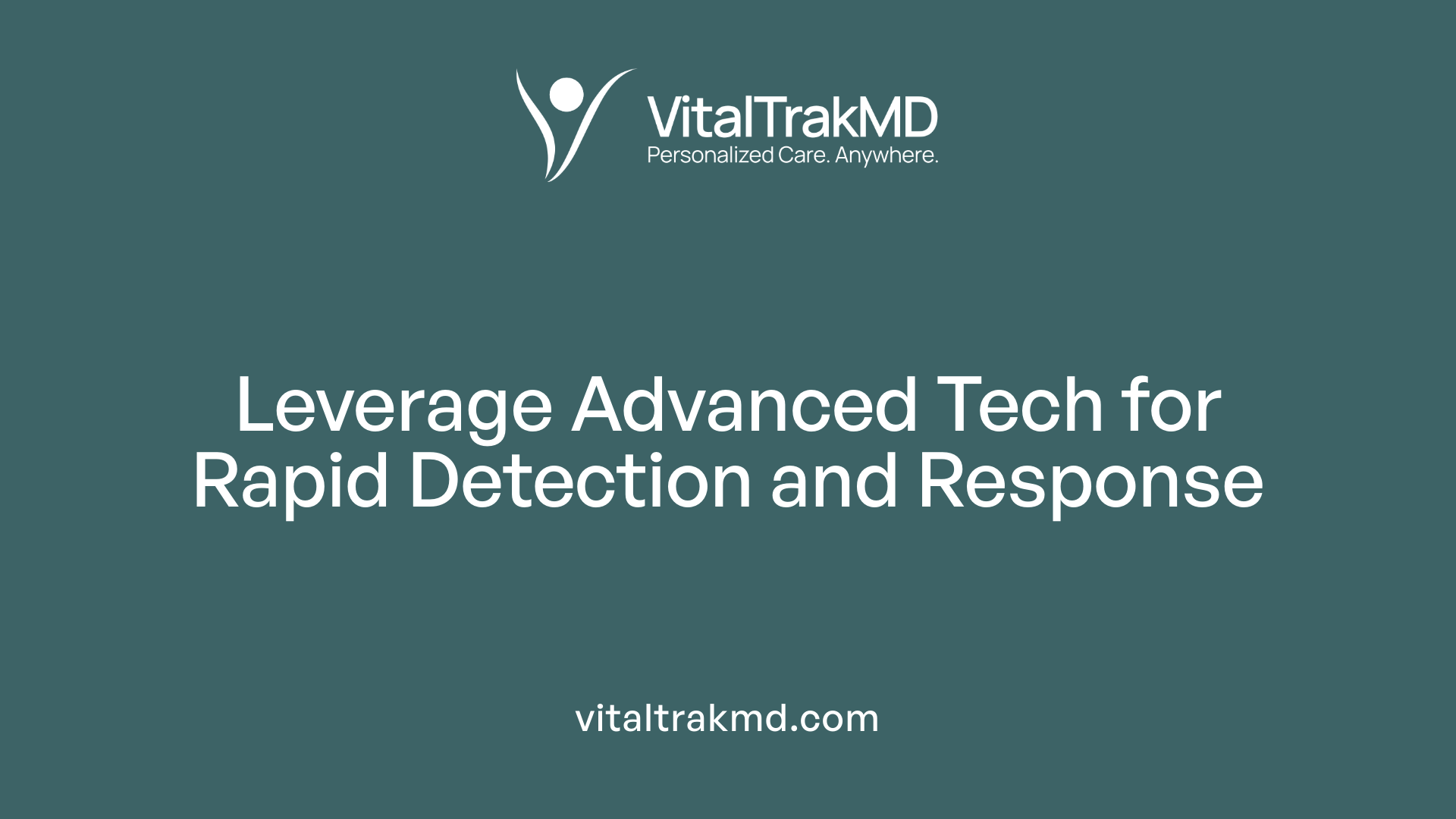Why Hybrid Programs Encourage Early Response to Warning Signs

Understanding the Power of Hybrid Programs in Early Warning Systems
Hybrid programs, which combine various technological and methodological approaches across disciplines, have emerged as a pivotal strategy in enhancing early detection and response mechanisms. By integrating traditional methods with innovative technologies like AI, machine learning, and real-time data analytics, these programs facilitate faster, more accurate identification of potential risks and enable timely interventions. This comprehensive narrative explores how hybrid programs foster early responses to warning signs across health, safety, research, and community settings, illustrating their benefits, design, and evolving role in safeguarding well-being.
The Role of Hybrid Programs in Promoting Health, Safety, and Well-Being
How do hybrid programs support mental, physical, and social well-being?
Hybrid work arrangements have gained prominence as a flexible solution that benefits employees' overall health. They foster a better work-life balance, which can significantly reduce burnout symptoms. Research from the International Workplace Group shows that 75% of hybrid workers report fewer burnout signs compared to traditional models.
To support mental health, organizations often incorporate virtual mental health resources, promote social connections through digital platforms, and encourage regular team interactions. These efforts help prevent isolation and build a sense of community, vital for emotional resilience.
Physical well-being is also prioritized through ergonomic support for home offices and safety protocols. This approach reduces musculoskeletal issues and promotes healthy work habits. Social connections are maintained via virtual meetings, collaborative projects, and community activities, which are crucial for social well-being.
How is safety integrated into hybrid work frameworks?
Implementing safety measures within hybrid models requires new strategies to address physical, psychological, and social risks. Companies use digital tools to perform virtual risk assessments, ensuring ergonomic setups and safe working environments at home.
Recognition and timely feedback play a vital role. Platforms like Toasty enable immediate, personalized recognition, boosting morale and engagement. Recognition initiatives, combined with individual and team check-ins, create a culture of safety and appreciation.
To proactively identify issues, organizations conduct anonymous pulse surveys and monitor engagement metrics. These data help recognize early signs of exhaustion, stress, or disengagement, enabling timely interventions.
How can workplaces monitor and manage workforce health proactively?
Monitoring employee well-being in a hybrid setup involves leveraging digital platforms that track workload, engagement, and burnout risks. The NIOSH Total Worker Health program provides a framework that integrates safety protections with health promotion, guiding organizations in implementing comprehensive strategies.
Mid-year engagement check-ins based on the CARE framework—Connection, Assessment, Realignment, and Empowerment—are effective in maintaining high levels of well-being. These check-ins foster open communication and allow organizations to adjust policies as needed.
Training managers to recognize warning signs, such as decreased participation or cynicism, is essential. Regular, meaningful conversations can help address issues early, fostering a supportive work environment.
In conclusion, hybrid programs, when thoughtfully implemented, serve as a powerful avenue for promoting a holistic approach to employee health. They facilitate flexible safety measures, enable continuous monitoring, and support a resilient, engaged workforce.
| Aspect | Strategies | Outcomes |
|---|---|---|
| Mental health support | Digital resources, social engagement | Reduced stress, increased resilience |
| Physical safety | Ergonomic support, safety protocols | Fewer health complaints |
| Social well-being | Virtual team activities, recognition programs | Increased camaraderie and job satisfaction |
| Proactive monitoring | Pulse surveys, engagement metrics | Early detection of burnout, timely intervention |
| Safety initiatives | Inclusive policies, stakeholder engagement | Better adherence, sustained safety culture |
Supporting Early Intervention and Safety via Hybrid Models

How do hybrid programs support early intervention and safety?
Hybrid programs blend online and face-to-face instruction, providing a flexible approach to early intervention and safety. This integration allows for the rapid delivery of services to children and their families, often through telehealth platforms that bring professionals directly into natural home or community settings.
By combining virtual assessments with in-person visits, practitioners can monitor developmental progress closely and respond promptly to any concerns. This timely intervention helps prevent issues from escalating, ensuring children receive support at critical early stages.
The use of evidence-based practices such as trauma-informed care and culturally responsive strategies enhances the safety and appropriateness of the services provided. These approaches create a secure environment for children and families, fostering trust and engagement.
Interdisciplinary collaboration is central to hybrid models. Teams of specialists—including speech therapists, social workers, and educators—work together seamlessly, sharing information and resources efficiently. This coordinated effort ensures that safety concerns are quickly identified and addressed, whether they involve developmental issues, mental health, or physical safety.
Hybrid programs leverage technology to facilitate communication, ongoing assessment, and intervention adjustments. Smartphones, tablets, and other devices enable practitioners to conduct virtual follow-ups, provide parent coaching, and maintain continuous engagement.
Overall, hybrid early intervention models promote accessibility, timeliness, and safety. They allow practitioners to respond swiftly to emerging needs, minimizing delays that could compromise child development and well-being. By integrating technology, evidence-based practices, and interdisciplinary teamwork, these programs make early intervention more effective and resilient in diverse settings.
Mechanisms by Which Hybrid Programs Enable Early Warning and Response
How do hybrid programs promote early responses to warning signs?
Hybrid programs are designed to improve the speed and accuracy of detecting hazards by combining multiple approaches like physics-based models, machine learning, and spatial analysis. This fusion allows for a more comprehensive understanding of complex systems, enabling earlier detection of potential threats.
For example, systems like HEWFERS (High-Performance Earthquake Warning Framework with Efficient Reporting System) use advanced computational techniques such as autoencoders, neural networks, and Gaussian process regression. These components work together to analyze real-time data and estimate phenomena like ground shaking immediately after an event begins, which facilitates prompt alerts.
An important part of trusted hybrid systems is their incorporation of explainable AI methods, like Shapley explanations. These techniques clarify how predictions are made, ensuring transparency and building confidence among decision-makers and the public.
By addressing diverse factors—from physical signals such as seismic activity to human and environmental influences—hybrid programs can bridge the gap between warning and response. This holistic approach reduces delays in initiating actions, allowing authorities to mobilize resources faster and mitigate impacts.
Overall, hybrid systems’ multifaceted strategies enable continuous monitoring of rising hazards and more timely interventions, enhancing overall safety and resilience.
| Aspect | Benefit | Additional Detail |
|---|---|---|
| Data Integration | Faster detection and response | Combines multiple data streams from various sources |
| Explainability | Builds trust and transparency | Uses techniques like Shapley explanations for clarity |
| Multi-approach fusion | Improves prediction accuracy | Merges physics-based models, AI, and spatial analysis |
| Real-time monitoring | Enables quick alerts | Provides immediate insights into evolving hazards |
| Holistic assessment | Addresses physical, human, environmental factors | Ensures comprehensive understanding of hazards |
Broader implications of hybrid early warning systems
Implementing such systems increases the timeliness of hazard detection, which is critical during rapidly evolving crises like earthquakes or infectious disease outbreaks. They can also adapt to different contexts and risks, making them versatile tools for disaster risk reduction.
Moreover, by making artificial intelligence decisions explainable and transparent, hybrid programs foster public trust and facilitate quicker policy responses. When stakeholders understand how warnings are generated, they are more likely to act decisively.
Sources indicate that the integration of AI, machine learning, and data analysis in hybrid systems is transforming early warning capabilities across various sectors, from natural disasters to public health.
In summary, hybrid programs leverage the strengths of multiple methodologies to detect warning signs early, facilitate faster responses, and ultimately save lives and resources.
Benefits and Effectiveness of Hybrid Response Strategies

How do combining live and asynchronous engagement improve response times?
Hybrid response strategies blend immediate, real-time interactions with flexible, self-paced activities to promote faster decision-making and problem resolution. Live engagement through video calls, chats, or virtual meetings facilitates instant clarification of questions and supports active participation. Meanwhile, asynchronous elements such as online discussion forums, recordings, and assignments allow individuals to process information and respond at their convenience, reducing delays caused by scheduling conflicts.
This dual approach ensures that responses are timely because students or employees can access support when needed, without waiting for scheduled sessions. The blend of synchronous and asynchronous methods means that responses are not only quicker but also more thoughtful and comprehensive, benefiting the overall workflow.
Deployment of real-time technological tools enhances responsiveness
Implementing advanced tools like instant messaging platforms, video conferencing software, and collaborative cloud applications is crucial for effective hybrid programs. These tools enable instant communication, allowing real-time feedback and quick problem resolution.
For example, platforms such as Zoom, Teams, or Slack facilitate immediate discussions and quick sharing of resources. Additionally, integration with project management tools like Trello or Asana helps track ongoing tasks and deadlines, promoting organized, swift responses.
These technological solutions support seamless interaction, ensuring that responses are delivered promptly, which boosts productivity and keeps projects on track.
Impact on response time and decision-making efficiency
Hybrid models significantly reduce response latency—the delay between identifying an issue and addressing it. Quick access to communication tools leads to faster decision-making, especially when combined with data-sharing technologies and alert systems.
When responses are quick, organizations can adapt to changing circumstances more effectively, addressing problems before they escalate. This is critical in areas like healthcare, education, and emergency management where delays can have serious consequences.
Moreover, the structured nature of hybrid programs encourages accountability, as scheduled check-ins and digital tracking facilitate timely follow-ups and updates. The overall outcome is a more agile, responsive environment that enhances operational efficiency and stakeholder satisfaction.
| Aspect | Benefit | Technology/Method Example |
|---|---|---|
| Combining live and asynchronous activities | Quicker responses with flexibility | Video chats + discussion boards |
| Deployment of real-time tools | Immediate feedback and coordination | Instant messaging, collaborative apps |
| Impact on decision-making | Faster resolutions, better outcomes | Alerts, real-time data dashboards |
Embracing these integrated strategies in hybrid environments ensures that responses are not only swift but also precise, fostering resilience and continuous improvement across sectors.
Management of Early Warning Signs Through Hybrid Technologies

What are advanced detection and prediction technologies?
Hybrid programs leverage cutting-edge tools such as computer vision, deep learning algorithms, and digital sensors to identify potential hazards early. These technologies analyze vast amounts of data from various sources—like satellite images, sensor readings, and real-time video feeds—to detect anomalies or risk indicators that might be missed by human observation alone.
Deep learning models can recognize patterns indicative of impending issues, whether in maritime safety, environmental monitoring, or healthcare. For instance, in disaster prediction, AI-powered systems analyze weather data and environmental conditions to forecast events like floods or disease outbreaks with high accuracy.
How do real-time monitoring and alert systems function?
A core component of hybrid approaches is the ability to monitor environments continuously and provide instantaneous alerts. Digital sensors deployed in fields such as transportation, public health, and industry feed data into centralized systems. When these systems detect abnormal patterns or signals, they trigger alerts that inform stakeholders immediately.
In maritime safety, real-time data from ships' onboard sensors and external monitoring stations can alarm operators about unsafe conditions, fatigue, or hazardous behaviors, enabling rapid action. Similarly, health systems utilize wearable devices and connected diagnostics to alert providers of early signs of patient deterioration, facilitating prompt intervention.
How do coordination and communication tools enhance response strategies?
Hybrid systems bolster coordination among multiple stakeholders by integrating communication platforms such as augmented reality (AR), digital twins, and collaborative dashboards. AR allows on-site personnel and response teams to visualize hazards interactively, improving situational awareness.
Digital twins create virtual replicas of physical systems or environments, enabling simulation and scenario planning before actual intervention. These tools help ensure that all response teams are aligned and well-informed, minimizing delays.
Furthermore, centralized communication platforms facilitate quick dissemination of alerts and instructions, fostering a coordinated response effort. These systems also support stakeholder engagement, enhancing transparency and trust.
How do hybrid programs influence the management of early warning signs and response strategies?
Hybrid safety management systems significantly advance early warning and response capabilities. By integrating sophisticated detection and prediction technologies, they enable earlier identification of risks and anomalies.
Real-time monitoring allows for swift alerts, which are critical in preventing accidents or mitigating impacts. The communication tools embedded within hybrid systems promote collaboration across organizations and disciplines, ensuring that responses are timely and well-coordinated.
In maritime contexts, where human error often plays a role in safety incidents, these programs can monitor for signs of fatigue, distraction, and unsafe acts, combining human-centric frameworks with technological insights.
Overall, hybrid approaches create a seamless flow from warning detection to response, reducing hazards and improving safety. Their ability to connect, analyze, and communicate makes them indispensable for managing complex, dynamic environments where early signals can make a significant difference.
Design, Rationale, and Advantages of Hybrid Approaches in Critical Domains

What are the rationale, design, and advantages of hybrid approaches in healthcare, research, or safety contexts?
Hybrid approaches are innovative strategies that combine multiple methods, models, or systems to address complex challenges in sectors like healthcare, safety, and research. Their primary goal is to improve outcomes by leveraging the strengths of different approaches while mitigating their weaknesses.
The fundamental rationale behind hybrid models is to facilitate faster translation of research findings into practice. Instead of conducting separate studies for effectiveness and implementation, hybrid approaches evaluate both simultaneously. This integration accelerates the process of understanding how interventions work in real-world settings and how best to implement them effectively.
The design of hybrid models varies, often categorized into three types:
| Type | Focus | Description | Typical Use |
|---|---|---|---|
| Type 1 | Efficacy and Effectiveness | Tests clinical interventions' effectiveness while collecting data on implementation processes | Early-stage research aiming to demonstrate clinical benefit and gather preliminary implementation insights |
| Type 2 | Effectiveness and Implementation | Equally emphasizes clinical outcomes and strategies to promote adoption, scalability, and sustainability | Applied interventions requiring concurrent assessment of impact and implementation barriers |
| Type 3 | Implementation Focus | Primarily tests strategies to enhance the adoption and sustainability of proven interventions | Post-evidence phase ensuring broad, sustained dissemination |
Advantages of hybrid approaches include:
- Enhanced Understanding: They provide richer data on barriers and facilitators, informing more tailored strategies.
- Relevance to Decision-Makers: Results are more applicable to real-world settings, aiding faster adoption.
- Efficiency: Combining effectiveness and implementation studies reduces time and resource expenditure.
- Greater Impact: They foster sustainable changes by addressing practical challenges during intervention deployment.
In safety contexts, such as healthcare safety or environmental monitoring, hybrid models enable a comprehensive evaluation of both the intervention impacts and the best practices for integration. For instance, in disease outbreak management, hybrid systems can simultaneously refine predictive models and improve operational protocols.
By blending research and practice, hybrid approaches serve as robust frameworks. They advance not only scientific understanding but also the effective, large-scale application of solutions to complex issues—making them especially valuable in domains requiring rapid, effective responses to urgent health and safety challenges.
Facilitating Early Detection and Response with Cutting-Edge Technologies

How do hybrid programs facilitate early detection and response mechanisms?
Hybrid programs utilize a combination of advanced technological tools and approaches to strengthen early detection and response strategies. By merging innovations like blockchain, Internet of Things (IoT) sensors, big data analytics, and artificial intelligence (AI), these systems can monitor vast streams of data in real time. This integration allows for swift identification of anomalies, emerging threats, or outbreaks, which is vital for prompt intervention.
Blockchain technology adds a layer of security and transparency, ensuring data integrity during contact tracing or reporting. IoT sensors continuously gather environmental or health-related data, providing ongoing updates on conditions that may signal risk. Big data analytics process large volumes of information, revealing patterns that might escape traditional methods.
AI is particularly pivotal in hybrid detection systems. Machine learning models, deep learning algorithms, and pattern recognition techniques analyze data to identify early signs of issues. For example, in cybersecurity, AI scans network traffic for unusual behavior indicative of threats. In healthcare, AI-powered image analysis and digital questionnaires assist with early diagnosis of illnesses like autism.
The combination of these technologies supports automated detection systems that can act rapidly. Rule-based alerts, behavior analysis, and predictive modeling enable authorities to respond proactively, aiming to contain threats before escalation. This multi-layered approach improves detection accuracy, reduces false positives, and helps uncover unknown or emerging risks.
For instance, during infectious disease outbreaks, hybrid systems analyze mobility data, social interactions, and other signals to forecast potential hotspots. Similarly, in safety monitoring, sensor data can detect hazardous conditions early. Overall, such programs maximize the strengths of each technology, ensuring faster, more reliable detection and enabling swift containment or intervention measures.
In summary, hybrid detection systems enhance early warning capabilities by leveraging the convergence of blockchain, IoT, big data, and AI to create a robust, dynamic surveillance network. This integrated approach ensures that organizations and health authorities can respond swiftly and effectively to complex challenges, safeguarding public safety and health.
Embracing Hybrid Strategies for a Safer, Smarter Future
As hybrid programs continue to evolve, their capacity to combine diverse technologies and methodologies ensures a more proactive, timely response to warning signs. Whether in healthcare, safety, or community resilience, these systems enable organizations and individuals to anticipate risks, respond swiftly, and prevent escalation. The integration of AI, real-time data analytics, and participatory approaches creates a robust framework for early warning, ultimately fostering safer environments and healthier populations. Moving forward, investing in hybrid models and their continuous refinement will be vital to addressing complex, dynamic threats effectively and efficiently.
References
- Preventing Hybrid Worker Burnout: Evidence-Based Mid- ...
- Employee Safety in Hybrid Era | GTPE
- Back to School 2020: Hybrid Learning
- the transformative role of AI-powered hybrid chatbots in ...
- A Novel Hybrid Model for Dengue Early Warning Systems
- School attendance problems and absenteeism as early ...
- Promote citizen engagement with warnings ― an empirical ...
- Effectiveness-implementation Hybrid Designs
Recent articles
Want to Feel Better and Live Healthier?
Join hundreds of patients taking control of their health with personalized care that fits their life – not the other way around.
Rated 4.8/5 by 32+ customers







